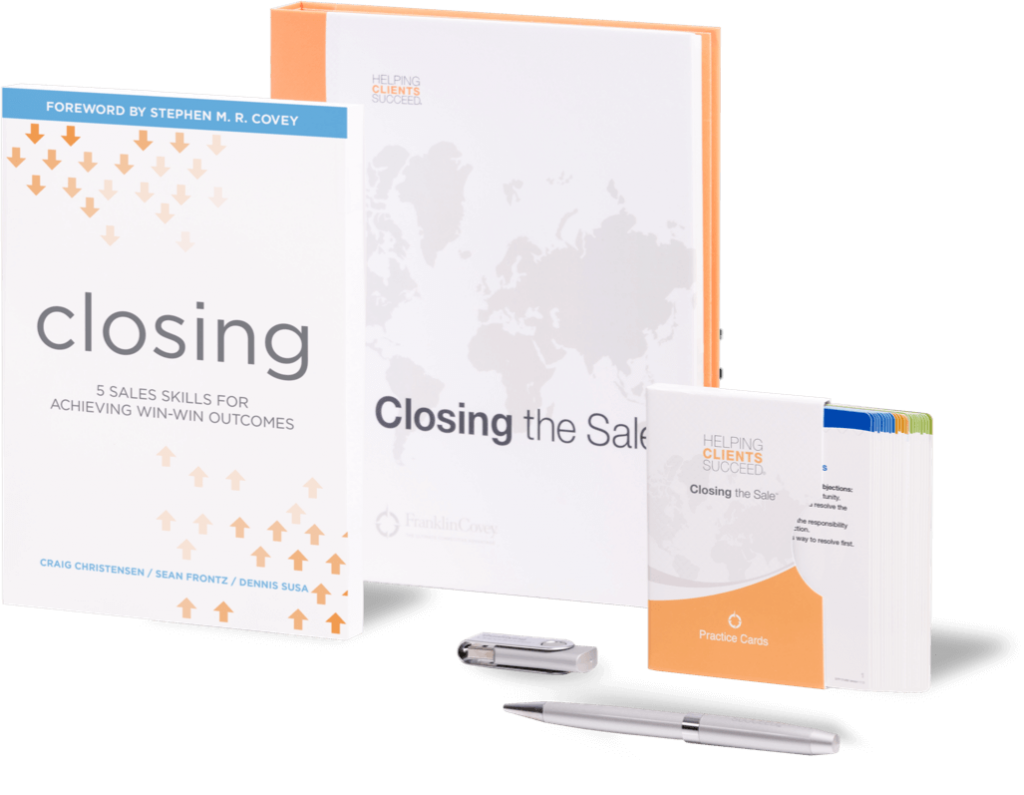HELPING CLIENTS SUCCEED: CLOSING
THE SALE
CLOSE MORE SALES BY APPLYING THE MINDSETS AND SKILLSETS OF THE WORLD'S TOP PERFORMERS

HELPING CLIENTS SUCCEED: CLOSING THE SALE
Close more sales by applying the mindsets and skillsets of the world’s top performers.
The Challenge
How can you close more deals?

The top performer difference.
Research from CSO Insights 2011 showed that only one out of six sales presentations had greater than a 50/50 chance of resulting in a sale. We feel many salespeople — even solid professionals — lose a sale for two common reasons:
-
Many sales presentations are lost before they are even given. Salespeople present to open the sales cycle rather than presenting to close.
-
The sales presentations are information rich and decision poor. The presentations end in “thanks a lot,” “we’ll think about it,” “Hey—could you leave us some of the PowerPoint slides?” Critically, no decision is made.
“Nowhere in the sales process do a few minutes of dialogue more quickly determine whether we continue or end our relationship than during the initial interaction.”
-RANDY ILLIG, CO-AUTHOR, LET'S GET REAL OR LET'S NOT PLAY
The Solution
Embrace the proven principles of Closing The Sale
Become certified to train Closing The Sale
With the right advocacy skills, you demonstrate more effectively how your solution will help your client get what they want and need. In this program you will learn how to win deals more consistently by applying the skillsets of top performers.
Top Performer Differentiators:
-
They sell with the intent to achieve win-win outcomes.
-
They skillfully prepare and create the conditions for good decisionmaking in every client meeting.
-
They spend less time talking at the client, and more time discussing with the client those decisions that will best serve the client’s needs.
-
They follow a simple, reliable process for good decision-making.

The Outcome
Influence decisions to achieve win-win outcomes.

Top Performer Differentiators:
-
Carefully organize each client call to influence and benefit the client’s decision-making process.
-
Begin narrowing decisions that lead to the final business decision
-
Determine the one decision the client needs to make at the end of the meeting
-
Ensure that the decision is client-centric, is singular, and that “no” is an acceptable answer.
-
Demonstrate the ability to validate the client’s key beliefs to their satisfaction
-
Develop proof points that enable the End in Mind Decision.
-
View objections as an opportunity rather than a threat.
-
Apply a predictable, 3-part approach to resolving objections.
-
Develop a plan for how to influence the conditions for good decision making before each client meeting.
-
Focus on achieving win-win outcomes.
-
Prepare a powerful open and close for each client meeting.
Contact us now.
Fill ou the form for more information about this solution.
Error: Contact form not found.


